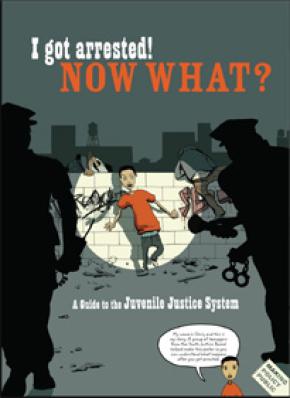I Got Arrested—Now What?
At the Center for Court Innovation, we have an abiding interest in helping the justice system improve the ways that it reaches out to, and speaks with, the public

Recent headlines from Missouri and other places remind us of the dire consequences that can ensue when justice agencies lose connection with the people they are supposed to serve.
We have recently embarked on a series of projects in an effort to improve communication with the public, spread the concept of procedural justice, and enhance the legitimacy of the justice system:
Improving Signage: At the Red Hook Community Justice Center, we worked with graphic designers and a broad range of partners to revamp signage throughout the courthouse in an effort to improve comprehensibility and show all court users that the facility exists to serve their needs.
Informing the Public: In recent years, we have helped create a comic book about how the juvenile justice system works, a video for parents whose children have Family Court cases, and Next Move, a website that links disconnected young people (ages 16-24) to education and other services.
Encouraging Community Engagement: Together with the U.S. Department of Justice's Bureau of Justice Assistance, we have identified four mentor courts—in San Francisco, Hartford, Dallas, and Orange County—that are examples of how courts can engage the public in new ways and create meaningful alternatives to low-level crime. The mentor courts will spread the idea of community justice through site visits, workshops, and other means.
Training Judges: Research has documented that if judges communicate respectfully with litigants, they can help improve compliance with court orders—and with the law in general. Building on this insight, we have worked with the Bureau of Justice Assistance and the National Judicial College to train judges and court officials in state-of-the-art courtroom communication techniques.
Testing New Ideas: In Red Hook and Syracuse, we are helping state courts adapt peacemaking techniques from tribal communities. In Newark, we have surveyed crime-plagued neighborhoods to figure out how local residents perceive local problems. In Brownsville, we have hosted police-teen dialogues. And our projects in Harlem, Midtown Manhattan, Crown Heights, the Bronx, Staten Island, and Queens are constantly seeking out new ways to engage the public in doing justice.
Please let us know if you have any questions—or ideas for how we can continue to push the envelope in these areas.

